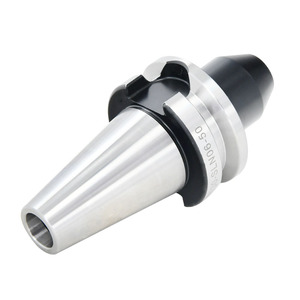(143 products available)











































































































































































































Various types of SLA tool holders can be used for the proper assembly and maintenance of tools. Each kind of holder provides distinct benefits that cater to specific industrial requirements.
Universal Tool Holders
Universal holders are designed to work with various tools, such as drills, milling cutters, and reamers. They typically have adjustable clamping mechanisms that allow them to secure tools of different sizes and shapes. Universal tool holders offer flexibility and adaptability in workshops where multiple types of tools are used.
Collet Holders
Collet holders use a cylindrical sleeve with a taper to hold the tool. The collet is designed to grip the tool tightly when the holder is tightened, providing a high level of accuracy and repeatability. They offer several benefits, such as good centering, flexibility for different tool sizes, and ease of use. However, they are limited to the range of diameters that each collet can accommodate.
Magnetic Tool Holders
Magnetic holders use a magnetic field to hold the tool in place. They offer several advantages, such as strong holding power, versatility for different tool shapes and sizes, and easy operation. However, they are limited to materials compatible with magnetic fields, and the holding strength may be affected by the surface contact area and the magnetic force.
Live Tool Holders
A live tool holder has built-in rotating tools, such as milling cutters or tap holders. It allows for on-machine machining operations during workpiece rotation. These holders enhance process efficiency by reducing setup time and improving accuracy but are limited by the number and types of tools that can be integrated into them.
Quick Change Tool Holders
Quick change holders enable fast and easy tool replacement, often featuring a clamping mechanism. They suit applications requiring frequent tool changes but may compromise clamping accuracy and stability compared to traditional holders if not aligned properly.
Regular upkeep of the SLA tool holder enhances printer maintenance and ensures model integrity and precision during printing. Here are some maintenance tips.
The SLA tool holders are compatible with the SLA 3D printers and are commonly used in the industrial sector. The following section highlights some of the uses of the tool holder.
Machine Compatibility:
It's crucial to prioritize tool holders that are compatible with the machines.
Length & Diameter:
Both length and diameter should be considered, as they affect tool stability and grip strength.
Locking Mechanism:
Locking mechanisms play an important role in tool stability, while easy operation influences efficiency.
Material:
The performance of a machine is largely determined by the materials it uses.
Cost vs. Quality:
Economic factors are relevant, but it is essential to find a balance between expense and quality.
Balancing compatibility with machines, cost-effectiveness, and material characteristics will enable a refined selection process for SLA tool holders.
Q: Why is material selection process important when designing a tool holder for SLA printers?
A: The material used affects the quality of the print and how well the tool holder works. Choosing something strong and flexible enough for delicate layers is vital.
Q: What is the future of SLA tool holder design?
A: As 3D printing technology improves, SLA tool holders will likely become smarter, integrating features like automated tool changes and cloud connectivity for remote management.
Q: How does the SLA tool holder affect production speed?
A: Efficient tool placement and retrieval facilitated by an SLA tool holder can streamline the printing process, reducing setup time and minimizing interruptions to enhance overall production speed.
Q: Can one holder support multiple tools in SLA?
A: Yes, a multi-tool holder can be designed to accommodate various tools, provided it is engineered with adjustable mounts and sufficient spacing to ensure proper alignment and stability.